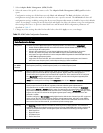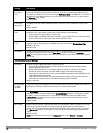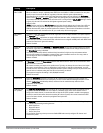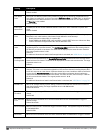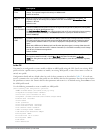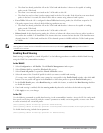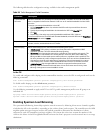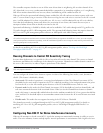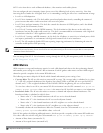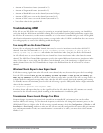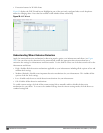
You can also use the command-line interface to configure and apply multiple instances of virtual AP profiles to an
AP group or to an individual AP. Use the following commands to apply a virtual AP profile to an AP group or an
individual AP.
(host)(config) #ap-group <name> virtual-ap <profile>
(host)(config) #ap-name <name> virtual-ap <profile>
Enabling Traffic Shaping
In a mixed-client network, it is possible for slower clients to bring down the performance of the whole network. To
solve this problem and ensure fair access to all clients independent of their WLAN or IP stack capabilities, an AP
can implement the traffic shaping feature. This feature has the following three options:
l default-access: Traffic shaping is disabled, and client performance is dependent on MAC contention resolution.
This is the default traffic shaping setting.
l fair-access: Each client gets the same airtime, regardless of client capability and capacity. This option is useful in
environments like a training facility or exam hall, where a mix of 802.11a/g, 802.11g and 802.11n clients need
equal to network resources, regardless of their capabilities.
l preferred-access: High-throughput (802.11n) clients do not get penalized because of slower 802.11a/g or 802.11b
transmissions that take more air time due to lower rates. Similarly, faster 802.11a/g clients get more access than
802.11b clients
With this feature, an AP keeps track of all BSSIDs active on a radio, all clients connected to the BSSID, and
802.11a/g, 802.11b, or 802.11n capabilities of each client. Every sampling period, airtime is allocated to each client,
giving it opportunity to get and receive traffic. The specific amount of airtime given to an individual client is
determined by the following factors:
l Client capabilities (802.11a/g, 802.11b or 802.11n).
l Amount of time the client spent receiving data during the last sampling period.
l Number of active clients in the last sampling period.
l Activity of the current client in the last sampling period.
The bw-alloc parameter of a traffic management profile allows you to set a minimum bandwidth to be allocated to a
virtual AP profile when there is congestion on the wireless network. You must set traffic shaping to fair-access to use
this bandwidth allocation value for an individual virtual AP.
Enabling Traffic Shaping
Traffic shaping is configured in an traffic management profile.
In the WebUI
To configure traffic shaping via the WebUI:
1. Select Configuration > All Profiles. The All Profile Management window opens.
2. Select QoS to expand the QoS section.
3. Select Traffic management profile.
4. In the Profiles Details window, select the name of the traffic management profile for which you want to
configure traffic shaping. (If you do not have any traffic management profiles configured, enter a name for a new
profile in the Profile Details pane, click Add, then select the new profile from the profiles list.)
5. In the Profile Details pane, click the Station Shaping Policy drop-down list and select either default-access, fair-
access or preferred-access.
6. Click Apply to save your changes.
DellPowerConnectW-SeriesArubaOS6.2 | User Guide AdaptiveRadioManagement (ARM) | 358



